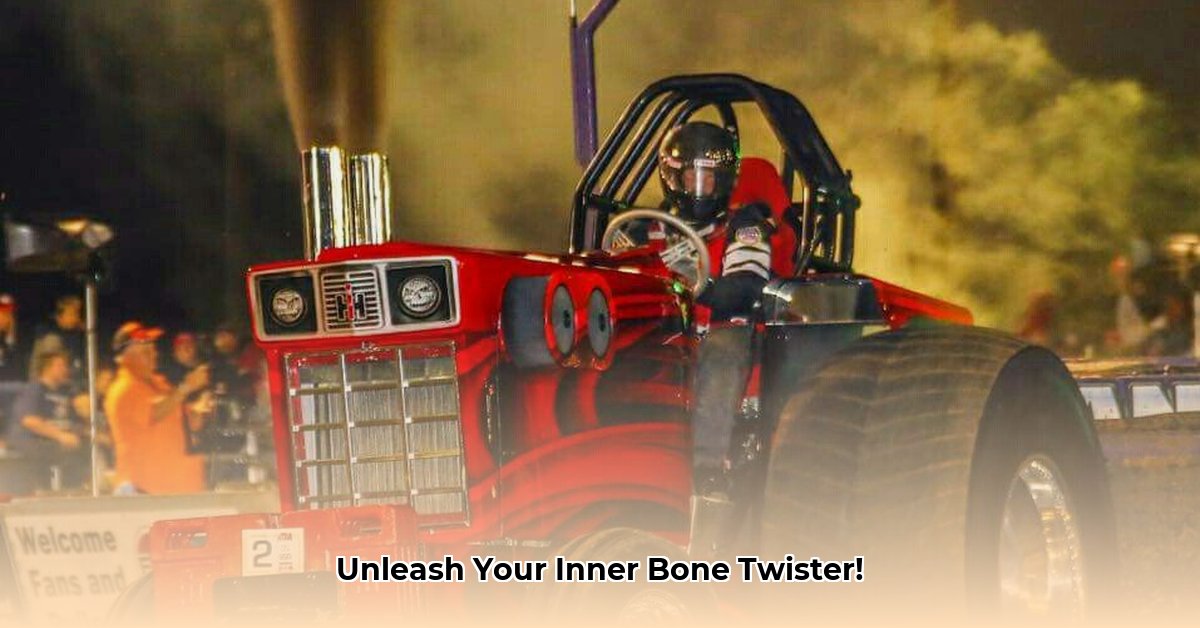
Understanding the Basics of Tractor Pulling
Tractor pulling, a high-stakes competition, pits heavily modified tractors against each other in a test of raw power and driving skill. These aren't your average farm tractors; they're purpose-built machines designed to pull a weighted sled as far as possible. Different classes exist, each with specific rules regarding tractor weight, engine size, and tire dimensions, ensuring fair competition. The tractor covering the greatest distance wins. But winning isn't solely about horsepower; it's about the driver's ability to manage the immense power and maintain optimal traction. How crucial is smooth acceleration in avoiding wheelspin and maximizing distance pulled? For more rules and regulations, check out these helpful guidelines.
Anatomy of a "Bone Twister" Tractor
"Bone twister" is the term for the most powerful, modified tractors in the sport. Their exceptional pulling power comes from a combination of carefully chosen modifications.
The Engine: The Heart of the Beast
Bone twisters boast heavily modified engines, often featuring turbochargers or superchargers to significantly boost horsepower and torque. These are not your average farm tractor engines; these are purpose-built powerhouses, meticulously tuned for maximum pulling power. What specific modifications improve engine performance? How much horsepower gain is typical?
The Chassis: A Fortress of Steel
The chassis (the tractor's frame) experiences immense stress. Bone twisters feature reinforced chassis, often with custom-built roll cages and additional structural supports, crucial for preventing catastrophic failures under extreme loads. Strengthening the frame is paramount to safely handle the immense pulling forces. Are there specific materials used for increased chassis strength and safety?
The Tires: Gripping the Ground
Massive, specialized tires are essential for transferring power to the ground. These giant tires have unique tread patterns designed for maximum grip and traction. The tire's size and tread directly impact traction. What tire specifications and types are best for different terrains?
Weight Distribution: The Balance of Power
Careful weight distribution is vital for maximizing traction and stability. A low center of gravity can significantly enhance stability during a pull. Finding the optimal weight distribution is key to preventing the tractor from tipping or becoming unstable under immense loads. How does weight distribution affect traction and stability during a pull?
Building or Modifying a Bone Twister: A Step-by-Step Guide
Building or modifying a bone twister is a complex undertaking requiring significant mechanical expertise and adherence to safety regulations throughout. It's not a weekend project; It’s a serious investment of time, resources and skill. Always prioritize safety.
Planning and Design: Choose a suitable base tractor, considering its size, weight, and engine type. Careful planning is crucial for success and compliance with competition rules.
Engine Modifications: This involves working with engine specialists to increase horsepower and torque through turbocharging, supercharging, increasing displacement, engine blueprinting, and fuel system upgrades.
Chassis Reinforcement: Reinforce the chassis with additional steel supports and potentially a custom roll cage for increased strength and safety. Professional welding is highly recommended.
Tire Selection: Choose large tires with appropriate tread patterns for maximum traction based on pulling surface conditions.
Weight Management: Carefully distribute weight within the tractor to optimize traction and stability.
Safety First: Improper modifications can be extremely dangerous. Seek expert guidance and prioritize safety throughout the build.
Driving Techniques: Mastering the Beast
Driving a bone twister demands skill, precision, and nuance. Smooth control of the clutch and throttle is essential for maximizing traction and preventing wheelspin. Experienced drivers employ techniques to manage power delivery and maintain optimal traction throughout the pull. What specific driving techniques are essential to success in tractor pulling?
Maintenance and Troubleshooting: Keeping Your Bone Twister Running
Regular maintenance is crucial for preventing breakdowns and ensuring the tractor's longevity. A preventative maintenance schedule is vital for competing reliably:
- Regular oil changes and filter replacements.
- Transmission fluid checks and changes.
- Tire pressure checks and inspections for wear.
- Chassis inspections for cracks or damage.
- Brake system checks and adjustments.
Conclusion: The Art of the Pull
Success in bone twister tractor pulling is a blend of engineering prowess, skillful driving, and meticulous maintenance. Every component plays a vital role in maximizing the tractor’s performance and ensuring participant safety. It’s a thrilling sport that combines power with precision, a testament to human ingenuity and the enduring excitement of competition.